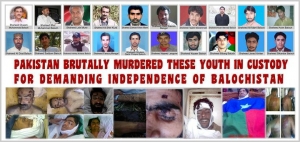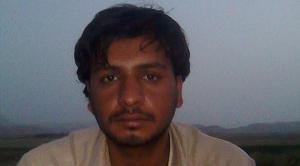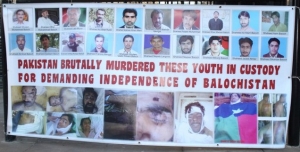By Malik Siraj Akbar
In its annual Pakistan Security Report 2010, the Islamabad-based independent think-tank, Pakistan Institute for Peace (PIPS), has described Balochistan as the country’s “most violent” province during the year 2010. While the resource-rich province witnessed a 7 percent decrease in the overall number of violent attacks as compared to 2009, an alarming 43 percent increase in murders and 4 percent upsurge in injuries was recorded last year. According to PIPS statistics, 737 terrorist attacks in the province killed at least 600 people and injured 1,117.
The most striking feature of the developments in the province last year was the dramatic urbanisation of the conflict. Only four years ago when the Baloch nationalist leader Nawab Akbar Bugti was killed, militancy predominantly existed in districts of Kohlu and Dera Bugti but today these districts rank as 9th and 18th respectively as the most violent places in Balochistan. In 2010, Quetta, the provincial capital and Khuzdar, the second largest city of Balochistan, were the epicentres of violence accounting for 189 and 130 violent attacks respectively, which killed 319 people in these two districts.
In addition, Kech, which is the third largest city of Balochistan, remained the third most violent district, which was followed by Kharan, the largest district area-wise and Lasbela, Balochistan’s sole industrial city neighbouring Karachi. This clearly shows a vertical as well as a horizontal upsurge in violence in a province where moderate demands for provincial autonomy are being replaced with a youth-backed quest for secession.
Political analysts in Balochistan attribute this significant rise in violence with the infusion of the government’s “kill and dump” policy vis-à-vis the missing persons. According to the Voice for Missing Baloch Persons, a local organisation comprising the missing persons’ family members, the dead bodies of at least 80 missing Balochs have been recovered from different parts of the province in the last five months.
“Most of the killed missing persons belong to Mekran,” says one local political analyst, “they all came from middle or lower middle class backgrounds. Almost all were educated professionals.”
While the issue of missing persons in Balochistan dates back to the military operation by former military ruler General Pervez Musharraf, the phenomenon of dumping the bullet-ridden dead bodies of the “disappeared” emerged only during 2010. The modus operandi in most of these cases was similar: People, mainly young political workers and professionals, were illegally disembarked from buses and wagons while travelling from one city to another, went missing for almost a week and then their dead bodies were thrown in some desolate location showing marks of severe torture and bullet shots on their heads and chests.
In some cases, the murderers also left condescending or warning notes with the dead bodies to rub salt into the bereaved families’ wounds. For example, a note found with the dead body of Gwadar-based Baloch journalist Lala Hameed Hyatan, whose family accused the government functionaries of kidnapping him, read: “A gift of Eid for the Baloch”. Hameed’s body was found a day after Eid . A similar note left with another activist’s body read: “He was an Indian agent. Anyone who demands Balochistan’s independence will meet a similar fate.”
In a statement issued in October, Amnesty International urged the government of Pakistan to investigate the murders of the political workers and Baloch leaders.
“Activists, politicians and student leaders are among those who have been targeted in enforced disappearances, abductions, arbitrary arrests and cases of torture and other ill-treatment. The violence takes place against a backdrop of increasing political unrest and Pakistan Army operations in Balochistan, south western Pakistan,” said Amnesty International.
One year after the announcement of the Balochistan Package, the Pakistan People’s Party (PPP) government has not succeeded in fulfilling its promise of recovering all the missing persons in the province. The Balochistan Assembly has off and on vented against these killings. However, neither any official investigations have been initiated yet nor have any arrests been made in connection to the killing of democratic political rivals.
“While the issue of enforced disappearances was reminiscent of Argentina’s Dirty War,” says a Baloch nationalist leader, “the ‘kill and dump’ policy is evocative of Al-Badar and Al-Shams activities in East Pakistan.”
Two newly formed anti-nationalist reclusive organisations, which identity themselves as the Baloch Musla Defai Tanzeem and Sipah-e-Shuhda-e-Balochistan, have been claiming responsibility for the killing of the Baloch activists. They have vowed to attack not only nationalists but also journalists and reporters who cover the political rallies of the nationalist parties. The killing of Khuzdar Press Club president, Mohammad Khan Sasoli, two months ago, local sources say, was in fact the culmination of a similar threat issued by one of these underground organisations to different press clubs.
On their part, the nationalists insist that these two outfits are the “death squad” of the government intelligence agencies, a charge vehemently denied by the officials. Based on their newspaper statements, the two shadowy organisations seem to have militant Islamic leanings with a passionate resentment toward what they call the ‘anti-Islamic idea of nationalism’. They explicitly accuse the Baloch nationalists as “agents of India” and that of foreign elements trying to disintegrate Pakistan.
For instance, when Balochistan Governor Nawab Zulfiqar Ali Magsi recently registered a complained with the army chief, General Ashfaq Kayani, during the latter’s visit to Balochistan about lack of progress over the recovery of the missing persons, the Sipah-e-Shuhda-e-Balochistan “warned” the governor in a statement: “Do not act like an Indian agent by supporting the Baloch terrorists who are trying to break Pakistan. We will teach you a lesson if you do not behave yourself.”
One of the anti-nationalist organisations also accepted responsibility for the killing of Balochistan National Party’s (BNP) secretary general Habib Jalib Baloch in Quetta in July last year.
The recent cycle of ‘kill and dump’ has included Baloch people hailing from a vast range of professions. Every bullet-riddled dead body is adding to anti-Pakistan and pro-secession sentiments among the masses in rural and urban parts of the province. Furthermore, such violations of human rights and inaction on the part of the government have led to more violent reactions from the Baloch nationalists.
In 2010, for example, at least 100,000 Punjabi settlers fled the province fearing the heat of Baloch reaction. More than one hundred non-Baloch settlers and Baloch accused of “spying” or “collaborating” with the government intelligence agencies, were killed in 2010. Repeated pleas by the Punjab Chief Minister Mian Shahbaz Sharif and his Balochistan counterpart Nawab Mohammad Aslam Raisani have not helped end the cycle of target killings.
Baloch armed groups justify killing of the ‘settlers’ as a “natural reaction” to what they bill as “state-sponsored target killing” of Baloch political activists in official custody. With the conflict showing no signs of a let-up in violence, the ordinary citizen, whether a Baloch or a Punjabi, will remain unsafe. Worst of all, the battle no longer has actors on the surface. The nationalists and anti-nationalists have both switched to an underground command and structure. The only on-ground signs of the battle are the bullet-riddled dead bodies of the victims of the conflict. (Courtesy: The Friday Times, Lahore)
Malik Siraj Akbar is a Hubert H. Humphrey Fellow at Arizona State University’s Walter Cronkite School of Journalism and editor of the online newspaper The Baloch Hal
http://www.crisisbalochistan.com/secondary_menu/analysishistory/disappearances-and-assassinations.html


